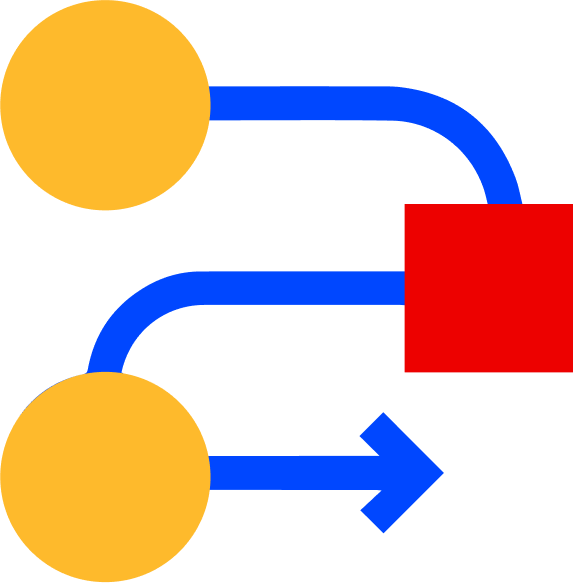How AI is Shaping the Future of eDiscovery Collection


AI and machine learning can make eDiscovery collection smarter, faster, and more cost-effective. It assists with challenges such as massive data volumes and high review costs, driving the future of digital law.
According to an article from Exploding Topics, about 78% of businesses currently use AI in their daily operations, while 90% already use it or have plans to do so. Such innovative legal solutions are essential for staying ahead of the competition.
In an era when legal teams face exponential data growth, the ability to collect, filter, and review electronically stored information (ESI) quickly and accurately is a competitive necessity. AI legal technology is becoming a core driver of efficiency, precision, and cost savings in eDiscovery.
What Is eDiscovery Used For?
eDiscovery (electronic discovery) refers to the process by which parties in litigation, investigations, or regulatory proceedings identify, preserve, collect, process, review, and produce electronically stored information.
eDiscovery is used to:
- Undercover relevant documents, emails, chat logs, social media data, metadata, and multimedia evidentiary materials in legal disputes
- Support fact-finding in litigation, regulatory investigations, internal compliance, and audits
- Enable defensible legal production by capturing relevant documents while maintaining the chain of custody
- Identify privileged material or sensitive personal data (PII) to withhold or redact
- Enable early case assessment to evaluate risks, strategy, and settlement options
Given its extensive applications, eDiscovery is a crucial component of technology-driven legal workflows. The efficiency and accuracy of collection are crucial to downstream review and production.
What Is the eDiscovery Collection Process?
The eDiscovery collection process is the step where relevant data sources are gathered in a defensible, secure, and forensically sound manner. In the traditional Electronic Discovery Reference Model (EDRM), collection follows identification and precedes processing and review.
Key sub-steps in the collection process include:
- Legal hold issuance and custodian notice: Once litigation or investigation is anticipated, legal holds are issued to custodians to preserve relevant data so that no spoliation occurs
- Source mapping and data identification: IT and legal teams map data repositories and identify:
- Custodians
- File shares
- Email systems
- Mobile devices
- Cloud platforms
- Collaboration tools
- Other ESI sources
- Forensic collection/logical collection: Depending on the case, data is collected either via forensic methods (bit-level image captures) or logical collection (file export, API pulls, connector integration)
- Metadata capture and preservation: Collection must preserve metadata (timestamps, authors, version history) and ensure integrity (hashtag, chain of custody)
- Pre-collection filtering (if allowed): Basic filtering (date ranges, custodians, keywords) may be applied pre-collection, but must be defensible and agreed with stakeholders
- Transfer to staging environment: The collected data is transferred into an eDiscovery system or secure staging repository, ready for processing, culling, and review
At each stage, audit trails, logs, and verification steps are essential to maintain defensibility.
Why Is eDiscovery So Expensive?
Understanding the factors in tech-driven eDiscovery is crucial. Multiple factors contribute to the high costs, particularly in complex and large-scale matters:
- Data volume explosion: Modern organizations generate terabytes of data daily, such as emails, chats, IoT logs, and more
- Multiple data sources and complexity: Collecting across diverse systems (cloud services, mobile apps, ephemeral messaging) increases technical complexity and requires connectors, APIs, and integrations
- Technical overhead and labor: There are many manual steps involved, such as collection, data processing, and quality control
- Review and human effort: Traditionally, human reviewers must read, tag, and code documents
- Inefficient workflows and rework: Smart filtering can help prevent errors, rework, and revocations of rulings
- Defensibility and risk management: Overcollection may be needed to avoid missing anything
- Vendor fees and software costs: There are various additional fees to consider, such as licensing fees, storage costs, and cloud infrastructure
How AI and Machine Learning are Revolutionizing eDiscovery Collection
AI-assisted data collection is transforming how legal teams approach the collection phase. Rather than passively gathering complete data dumps, advanced systems can selectively and intelligently collect only what matters.
Smarter Pre-Collection Filtering and Prioritization
Machine learning models can ingest known relevant samples or training sets and then predict which data segments, custodians, or time periods are likelier to contain relevant materials. This helps focus collections, reduce overcollection, and shrink data volumes before review begins.
Automated Connectors and Dynamic Mapping
AI tools can analyze system structures (cloud services, SaaS apps, collaboration platforms) to infer optimal connectors or APIs. They can dynamically adapt to schema changes and automatically map fields and relationships, reducing manual setup.
Continuous Learning and Adaptive Collection
As human reviewers begin coding during downstream review, AI models can feed back signals to regine which custodians or file paths are likely unhelpful, triggering adaptive re-collection or de-prioritization of certain buckets. Having this "feedback loop" reduces wasted collection cycles.
Accuracy in Extraction and Metadata Capture
AI-powered tools can detect and preserve elements, including:
- Subtle metadata
- Hidden artifacts
- Embedded objects
- Revision history
- Content relationships
Some generative or deep learning models can reconstruct hidden context or infer missing metadata where standard tools fail.
Frequently Asked Questions
How Reliable Is AI in Preserving Defensibility?
When properly configured, AI models are designed for audibility and transparency. Many platforms log model decisions, allow human review of filtering steps, and maintain chain-of-custody records. Courts are increasingly accepting predictive and AI tools when their methods are well-documented and validated.
What Are the Limitations or Risks?
AI models may be biased, leading to false exclusions. They require oversight and validation.
Also, novel or highly bespoke data types may challenge AI models unless properly trained. Ensuring compliance with data privacy rules (e.g., GDPR) and ensuring no spoliation is vital.
What Role Does Machine Learning in eDiscovery Play Overall?
Machine learning underpins the predictive filtering, classification, and relevance scoring that powers both collection and automated legal review. It enables continuous active learning, adaptive workflows, and iterative improvement across the eDiscovery lifecycle.
Embracing AI in eDiscovery Collection
AI in legal tech (especially AI-assisted data collection and machine learning in eDiscovery) offers a path to more precise, faster, and lower-cost collection before data even hits review. The future of digital law is about transforming the entire eDiscovery collection pipeline with smart, transformative legal tools and tech-driven solutions.
Onna is dedicated to helping technology and business leaders manage data effectively from their digital management tools. We're trusted by a range of innovative organizations, including Oracle, HackerOne, Lyft, BuzzFeed, and more.
Reach out now to get a free demo.
 eDiscovery
eDiscovery Collections
Collections Processing
Processing Early Case Assessment
Early Case Assessment Information Governance
Information Governance Data Migration
Data Migration Data Archiving
Data Archiving Platform Services
Platform Services Connectors
Connectors Platform API
Platform API Pricing Plans
Pricing Plans Professional Services
Professional Services Technical Support
Technical Support Partnerships
Partnerships About us
About us Careers
Careers Newsroom
Newsroom Reveal
Reveal Logikcull by Reveal
Logikcull by Reveal Events
Events Webinars
Webinars OnnAcademy
OnnAcademy Blog
Blog Content Library
Content Library Trust Center
Trust Center Developer Hub
Developer Hub